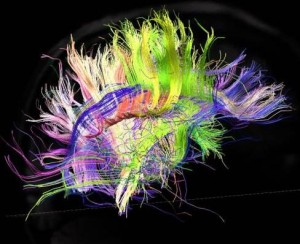9 July 2014. Defense Advanced Research Projects Agency, a division of the U.S. Department of Defense, is awarding grants to two universities and a national lab to develop devices for implanting in the brain that can sense and restore memory loss. Research agreements totaling $40 million were designated for University of California in Los Angeles, University of Pennsylvania in Philadelphia, and Lawrence Livermore National Laboratory in California. DARPA says full funding will be allocated over 4 years and contingent on meeting specified technical milestones.
The Restoring Active Memory program aims to find a technology to treat loss of memory, a widespread problem that results from traumatic brain injury, diagnosed in 270,000 military service members since the year 2000, as well as affecting 1.7 million people in the U.S. overall. Memory loss is also a result of disorders such as Alzheimer’s disease.
DARPA’s partners will design and test wireless electronic devices, called neuroprosthetics, that can be implanted in the brain to overcome damage that prevents retrieval of past memories and remembering new experiences. The work is expected to begin with development of computer models showing the process of encoding memories in the brain, resulting in discrete pieces of knowledge that humans can retrieve and describe in words. The models also aim to highlight ways that neural stimulation can restore this encoding ability following injury to the brain.
From the computer modeling, the researchers plan to develop self-contained implantable devices that deliver neural stimulation to specific parts of the brain associated with memory. The UCLA research team will build on its previous work focusing on the hippocampus and entorhinal regions that includes electrodes implanted in patients’ brains to help treat epilepsy. The UCLA team, with Livermore Lab, anticipates developing a new system much smaller than current devices that also addresses these regions, in this case to help restore memory.
Penn’s researchers, like their colleagues at UCLA, aim to build on current related work. Unlike UCLA, however, the Penn team will investigate neural interactions occurring across different regions of the brain, gathering data from patients recording brain activity with electrodes implanted in multiple areas to treat various neurological disorders.
In these studies, the researchers will ask patients to take part in computer-based memory exercises to reveal patterns of brain activity that can serve as indicators of memory formation and retrieval. These findings are expected to result in models for designing an implantable device, based in part on a related project with the medical device maker Medtronic, to restore memory functions.
Addressing brain injuries with technology is becoming a leading DARPA priority. In May, the agency awarded grants totaling $56 million to Massachusetts General Hospital in Boston and University of California in San Francisco for analyzing brain activity and delivering near real-time neural stimulation therapies to treat traumatic brain injuries.
Read more:
- NIH Funds $24 Million for Genetic Links to Alzheimer’s
- Early Trial Shows Neural Regrowth Effects on Depression
- Paralyzed Man Moves Hand with Neuro-Signal Implant System
- Challenge Seeks Methods to More Accurately Detect Epilepsy
- Medical Centers to Develop Brain Signal Tracking, Therapies
* * *


 RSS - Posts
RSS - Posts
You must be logged in to post a comment.